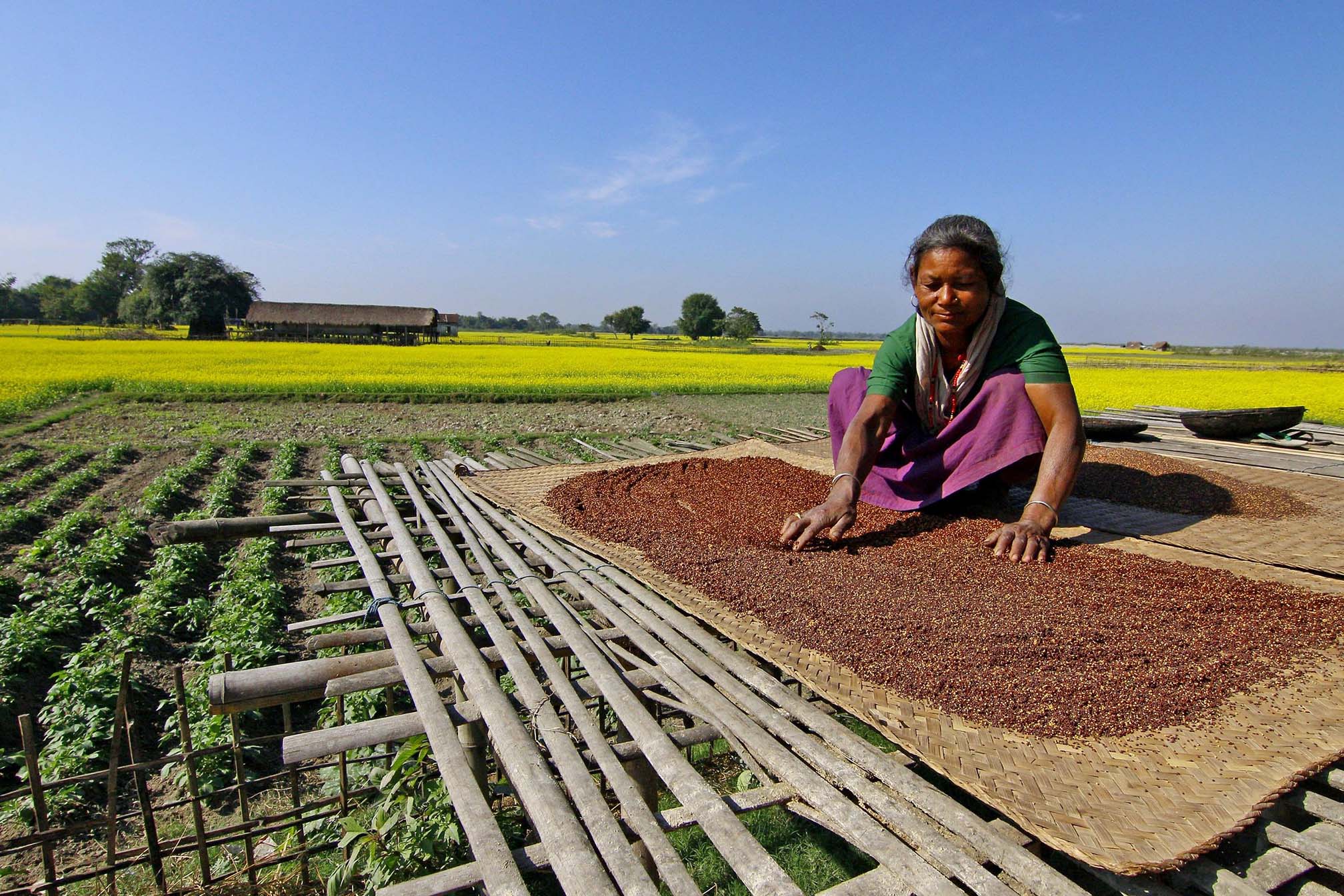Technology Needs Assessments
Pathways for climate technology implementation
HISTORY
Technology needs assessments (TNAs) are a long-standing process under the UNFCCC. Since 2001, more than 80 developing countries have undertaken TNAs to assess their technology needs to address climate change. The concept of the TNA was formalized under the UNFCCC process in 2001, when in Marrakesh Conference of the Parties (COP) 7 established the technology transfer framework. One of the originating themes of the framework is the TNA.
The TNA process has constantly evolved and may be broken into two distinct rounds. Between 2001 and 2008, the first round of TNAs focused on supporting developing countries to develop a clearer understanding of their technological needs and priorities for reducing greenhouse gases and adapting to climate change. The Global Environment Facility (GEF) provided financial support for these TNAs, with the United Nations Environment Programme (UNEP) and the United Nations Development Programme the implementing agencies for supporting the country projects.

The second round of TNAs commenced in 2009 and continues until present. This round has placed a greater emphasis on implementation, on supporting countries to translate their identified technology needs into implemented projects and programmes. In this way, the TNA process evolved to have three broad benefits. It supports developing countries to:
• Identify technological means to address climate change and accelerate national development
• Build national capacity to support national sustainable development
• Create technology action plans to achieve implementation and demonstrate technology viability
Support for TNAs in this round has come through GEF’s Poznan Strategic Programme on Technology Transfer. This GEF programme has funded TNA global projects implemented by UNEP in partnership with the Technical University of Denmark (this partnership is known as UDP). The TNA global project phase I ran from 2009 to 2013, with 36 developing countries participating. Find all submitted TNA reports and technology action plans (TAPs) here.
Between 2015 and 2018 the UDP implemented the GEF-funded TNA Global Project, phase II, which provided financial and technical support to 26 countries to conduct TNAs. Countries submitted their reports in 2018. In 2016, the GEF Council approved a TNA Global project, phase III, to support a further 23 developing countries from Small Island Developing States (SIDS) and Least Developed Countries (LDCs). This project started in 2018. Phase IV of the global TNA project was approved by the GEF in June 2019 and will include more than 15 LDCs and SIDS. Phase IV is estimated to begin in 2020.
Africa
Cote d'Ivoire, Ghana, Kenya, Lebanon, Mali, Mauritius, Morocco, Rwanda, Senegal, Sudan, Zambia, Ethiopia
Asia and the Pacific
Bangladesh, Bhutan, Cambodia, Indonesia, Kazakhstan, Laos, Mongolia, Nepal, Sri Lanka, Thailand, Vietnam
Eastern Europe
Azerbaijan, Georgia, Moldova,
Latin America and the Caribbean
Argentina, Bolivia, Colombia, Costa Rica, Cuba, Dominican Republic, Ecuador, El Salvador, Guatemala, Peru
Africa
Burkina Faso, Burundi, Egypt, Gambia, Jordan, Madagascar, Mauritania, Mozambique, Seychelles, Swaziland, Tanzania, Togo, Tunisia
Asia and the Pacific
Malaysia, Philippines, Pakistan, Kazakhstan, Lao PDR
Eastern Europe
Armenia
Latin America and the Caribbean
Belize, Bolivia, Grenada, Guyana, Honduras, Panamá, Uruguay
Africa
Benin, Central African Republic, Chad, Djibouti, Eritrea, Guinea, Niger, Liberia, Malawi, São Tome and Principe, Uganda
Asia and the Pacific
Afghanistan, Fiji, Myanmar, Nauru, Vanuatu
Caribbean
Antigua & Barbuda, Dominica, Haiti, Jamaica, Suriname, Trinidad & Tobago
Eastern Europe
Ukraine
Phase IV of the Technology Needs Assessment project was approved by the Global Environment Facility in June 2019 and will include 17 Least Developed Countries and Small Island Developing States.
Africa
Comoros Union, Ethiopia, Guinea-Bissau, Lesotho, Somalia, South Sudan
Asia and the Pacific
Kiribati, Maldives, Niue, Papua New Guinea, Solomon Islands, Timor-Leste, Tonga, Tuvalu, Yemen
Caribbean
Bahamas, St. Kitts & Nevis
Strengthening the TNA process and implementation of its outcomes
Enhancing the TNA process and the implementation of TNA results has been a key focus of the UNFCCC since COP 7 established them. In 2002, the Climate Technology Initiative (CTI) developed one of the first TNA handbooks. Working with key stakeholders (including countries, the UNFCCC secretariat, UNDP and UNEP), the document sought to provide developing and transition countries with a summary of methods for conducting climate change technology needs assessments and implementation activities.
In 2004, the UNDP prepared the second TNA handbook ‘Conducting Technology Needs Assessments for Climate Change’ drew on the CTI handbook and other previous guidance to provide ‘user-friendly’ guidance on approaches, methods, and tools that can be used to conduct a TNA. In 2010, consistent with the greater focus on TNA implementation, UNDP, the UNFCCC and the Expert Group on Technology Transfer produced an updated TNA handbook designed to assist countries in making informed decisions in their technology choices. For the first time, the guidance contained information on preparing action plans and project ideas for implementation of prioritized technologies.
More recently, UDP, as the implementing agency of the TNA global projects, has released a series of guidebooks focusing on specific elements on the TNA process. In addition, drawing on its significant experience in supporting countries to prepare TNAs, UDP published in 2019 a new TNA Handbook. This publication builds upon the previous guidebooks and UDP’s experiences and lessons in the field to offer a step-by-step guide for countries conducting a TNA.

The COP and the Technology Mechanism’s bodies, the Technology Executive Committee (TEC) and the Climate Technology Centre and Network (CTCN), have also worked to strengthen the TNA process and support enhanced implementation of TNA results. In accordance with its mandate on technology needs, the TEC has undertaken analysis on how the TNA process may become more coherent with other emerging UNFCCC processes, such as national adaptation plans and nationally determined contributions. The TEC has produced a series of policy briefs and key messages on enhancing the TNA process. The CTCN, in line with its mandates, has worked to support countries in implementing their TNA results through its core services, especially through its technical assistance. In 2014, COP 20 requested the TEC to provide guidance on how the TNA results, in particular the technology action plans (TAPs), can be developed into projects that can be ultimately implemented. Responding to this request, in 2016 the TEC, UDP and the UNFCCC secretariat published a handbook on guidance for preparing a TAP.
TNA Synthesis Reports
To capture the trends and highlight common issues and opportunities, the UNFCCC secretariat has periodically compiled and synthesized the findings extracted from developing country TNA reports. The secretariat has published three synthesis reports on technology needs assessments based on this work. These reports highlight priority technology needs identified to mitigate greenhouse gas emissions and adapt to the adverse impacts of climate change. They also highlight specific barriers to technology transfer and measures to address them. See the latest trends arising from TNAs.
